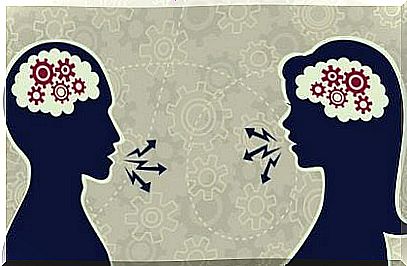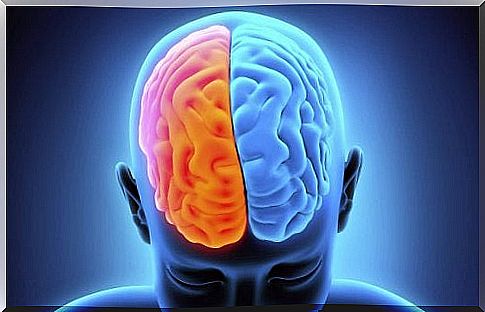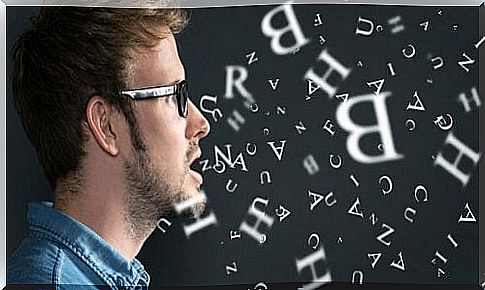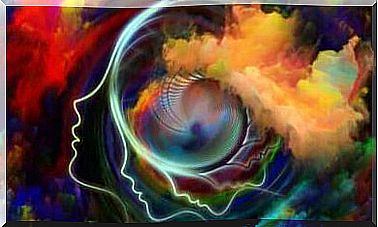Neural Models Of Language

Language is an instrument that humans use to communicate and think. It is represented in many areas of the brain. Thus, brain damage that affects these regions can cause speech impairments. This is why many authors have taken an interest in the study of neural models of language.
Some brain functions, including language, are not concentrated in one place. In order for language to occur, a whole group of cortical and subcortical areas come into play. Each of these areas participates in the final result, which is none other than the production and development of language.
This way, if one component is damaged, the whole system will be affected. The main components of language are found in the dominant hemisphere (left). At the level of neural models of language, we can differentiate between classical neural models of language and new models of language.
Ancient neural models of language
In 1836, a French doctor by the name of Marc Dax exhibited his scientific work at the congress of the Medical Society of Montpellier. He talked about the relationship between patients with aphasia and the lesions produced in the left hemisphere. He thus came to the conclusion that the language was lateralized (left hemisphere).

A little later, the anatomist, doctor and anthropologist Paul Broca brought another element to this subject. The doctor presented a patient with lesions in the frontal lobe of the left hemisphere. The latter suffered from problems in the production of language.
Another neurologist recognized for his work on the development of neural models of language was Wernicke. In 1874, the neurologist and psychiatrist discovered a relationship between the lesion in the first left temporal convolution (Wernicke’s area) and the loss of understanding of language.
A few years later, the North American neurologist Norman Geschwind proposed a neo-connectionist model. The scientist asserts that, on the one hand, the linguistic capacity to name objects brings about the confluence of semantic representations with variable modalities. He also observes that the lower parietal lobe has properties exclusive to the human species. His conclusion is that the seat of the ability to name objects is in the lower parietal lobe.
In addition, neuroscientist Roger Sperry, who won the Nobel Prize in Medicine for his experiments in cerebral lateralization, has also made it possible to make progress in this area. In his research, Sperry demonstrated that hemispheres are specialized. He also underlined the role of the corpus callosum in functional integration. From this work, he deduced that the language of most of the population was in the left hemisphere.
New neural models of language
As research progressed, one very clear thing became clear: language is a complex system. The classical model concentrated its importance in the crucial areas of Broca, Wernicke, the angular gyrus and the arcuate beam. In addition, current models include language processing at different levels and according to currents organized into “channels”.
Dual-channel language processing model
This model consists of an input (ventral channel) and an output (dorsal channel). Thus, the ventral way would take care of:
- Analyze sound
- Determine the origin
- Identify the sound and recognize the word with the available lexicon
- Connect the word conceptually (with what we know about it)
- Give a format to the word. Combine elements to generate a structure (for example: plurals)
The output or dorsal route would consist of:
- Articulate words
- Translate auditory information into motor information

Functional neuroanatomy of language
Language is not found in one but in several lobes of the brain. Thus, each lobe records information in different regions following an increasing structure: first the phonological information is recorded in the dorsal areas, then the synthetic information and, finally, the semantic representations in the most ventral part.
For its part, the temporal lobe is responsible for storing new words and retrieving the stored words. The parietal lobe takes care of the analytical processing. The frontal lobe has an important synthetic function. It takes care of understanding and expression. Finally, it should be emphasized that aphasia occurs when an impairment in the ability to use acquired language takes place.
It is therefore evident that even though language is lateralized in the left hemisphere, several parts of our brain are needed to produce, develop and understand it. The result (language) takes place through the integration of several zones. They are all essential to its production and understanding.










